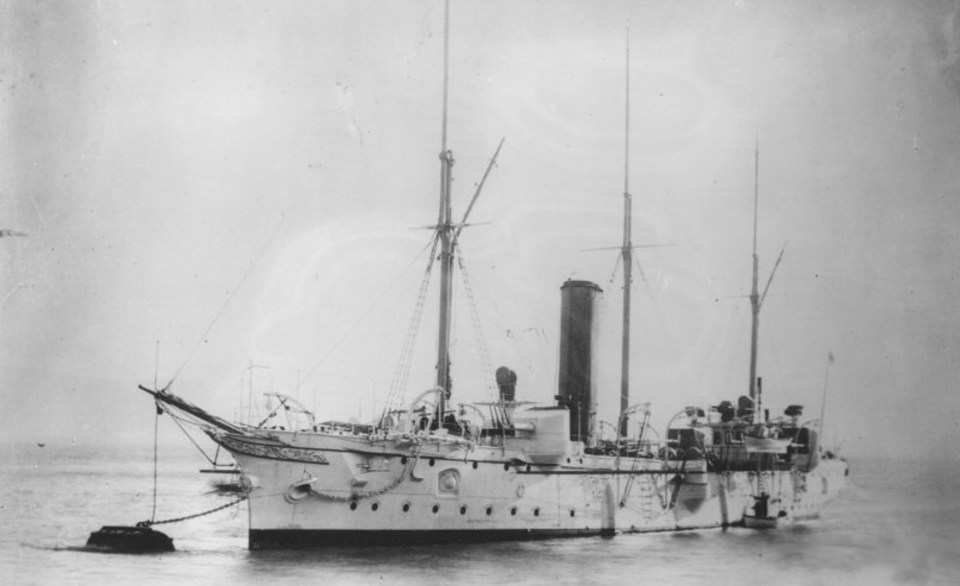THE FINAL traces of a British warship that sank off of the “Coast of Death” over a century ago has been discovered in an unlikely spot.
HMS Serpent disappeared off of the dangerous Costa da Morte in Spain in 1890 killing 173 people.
Credit: Pen NewsA piece of the HMS Serpent was discovered in Spain[/caption]
Credit: Pen NewsThe British warship sank off the ‘coast of death’ in northwestern Spain[/caption]
Credit: Pen NewsA anchor from the ship was found by local police[/caption]
The bodies of 142 of these crew members tragically washed up on the shore in the weeks that followed.
Segments of wreckage were also washed up and found over time but Spanish police just discovered a long lost-fragment from 130-years-ago.
This piece was located decorating the facade of a home in Muxia, in northwest Spain.
Officers were tipped off that a local property had the Serpent’s anchor on display in June, launching an investigation.
The possible backstory behind the extraordinary find was shared by The Guardia Civil, one of Spain’s two national law enforcement agencies.
The agency said: “According to the testimonies obtained, this anchor was extracted in the area of Cabo Vilán, in Camariñas, around 25 years ago, when a fishing boat caught the anchor in its nets.
“When trying to recover it, already close to the surface, the gear broke and the anchor returned to the bottom.
“So the boat’s captain noted the coordinates, so that another vessel with a greater draft could pick it up the next day.
“The man under investigation later took the anchor and used it to decorate his home.”
This discovery is being investigated by the police as local law in Galicia, north-west Spain, states the remains of shipwrecks from before 1901 are protected cultural heritage.
Therefore, any protected artefacts recovered without authorisation must be confiscated and made available to the relevant authorities.
This anchor was determined to be of the “admiralty” type, common among Royal Navy ships in the 1800s, and was transferred to the Museum of Man, in Camelle.
Local police added they were investigating the origins of two other anchor artefacts they discovered.
This has not been the only recent warship discovery made after over a century.
What happened to HMS Serpent?
The British Royal Navy warship sank off of a deadly Spanish coast killing 173 people.
This torpedo cruiser tragically sank on the night of 10 November 1890.
The vessel set out at night in the Boi Point shallows during a storm with poor visibility.
HMS Serpent was travelling from the mainland to the West Africa Station near Sierra Leone.
Many of the people onboard died that night as life jackets were not yet in wide use and the Serpent only had 25.
Only three of the 176 crew survived as most of the bodies washed up on the shore in the following days and weeks.
Part of the ship was scrapped while the other parts were given to archaeologists.
A long-lost anchor from the ship was discovered by police in 2024 at a home in Muxia.
Source: Rimartes
A mystery shipwreck was found off of the Cornwall coat in England.
The remains of the Escuriel, which got into difficulty near Portreath, Cornwall, in 1895, were found by Rachael Edmans, 36, who went on a solo dive.
The steamer was thought to have been heading outbound from Cardiff when the weather took a bitter turn, with the threat of snow.
An engine room leak caused the vessel to get into difficulty, where the Hayle lifeboat F.H. Harrison was launched to aid its recovery.
The rescue mission was not successful as only nine of the 20 people onboard survived.
Credit: Pen NewsPolice confiscated three anchors due to a local law[/caption]
Credit: Pen NewsThese artefact are in the Museum of Man, in Camelle.[/caption]

